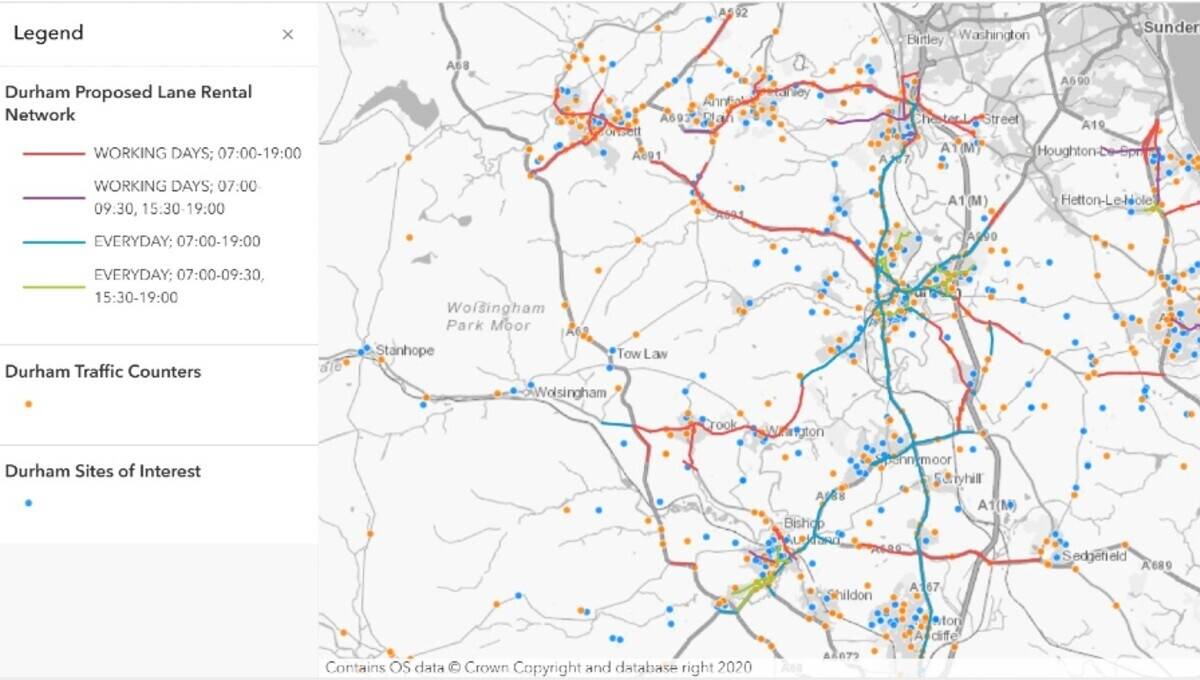During these unprecedented times when we all need to come together to support each other and those most in need, Wales is bringing together datasets from across the public sector and using the Unique Property Reference Number (UPRN) to coordinate the response to its most vulnerable citizens.
When the Government announced it would write out to the 1.5m vulnerable citizens in England, authorities in Wales immediately decided that the best way to integrate the various datasets from across the NHS, local authorities and government would be to use the UPRN to bring datasets together. This would ensure that Wales had the most accurate information on vulnerable citizens.

Local authorities needed the information on these vulnerable people in order to provide effective support to those most at risk and it was agreed that appending the UPRN to the 70,000 records across Wales would facilitate better integration within the local authorities' systems.
The data was sourced from NHS Wales and coordinated through the 'Intelligence Hub' within Newport City Council, through to GeoPlace who enhanced the data with the inclusion of the UPRN, local authority boundary allocation and latitude/longitude coordinates.
Shaun Powell, Head of the Intelligence Hub at Newport City Council said "adding this additional information allowed the NHS dataset to be geo-referenced and onwardly processed so that local authorities could identify and provide additional support to critically ill people in their area. This will also enable local authorities to provide additional support to vulnerable people in their homes as a protective measure designed to shield them from the higher health risk they face from contracting the novel coronavirus COVID-19."
Newport City Council then distributed the enhanced data across the 22 local authorities in Wales via the Civil Contingencies Managers. All of this was achieved within 24 hours of receiving the data from the NHS.
Shaun Powell continued "The aim was to get the data to the local authorities before the letter was received by the citizens, this way it gave the local authority the best chance of not only coordinating resources but also ensuring that they were as well prepared as possible. As soon as it was agreed this would be done using the UPRN as the key identifier, the decision to seek the support from Newport City Council and GeoPlace was an easy one."
Why Wales decided to use the UPRN
Welsh Government and the local authorities in Wales are delivering exceptional support under challenging circumstances. In almost every aspect of their work, a first response involves pin-pointing a location and the UPRN plays a huge part in responding more effectively to critical events.
As a unique data point, the UPRN also enables the sharing of personal information without the identity of the individuals concerned being revealed. This means that public sector organisations can work together more efficiently, while at the same reducing the risk to beneficiaries, in this case vulnerable individuals'.
For many organisations, the identification of vulnerable individuals is a pre-requisite for their business models. For example, utility providers have a statutory duty of care towards people who may find it harder to access or pay for their services, or who need essential services to ensure their health and wellbeing. Someone may need a mains-powered oxygen concentrator to aid their breathing or a family might be reliant on an emergency medical alarm.
In the past, organisations have tried to capture and combine that vital data about vulnerable individuals' locations from different sources. This approach can lead to errors with room for doubt over the most up-to-date, single version of the truth.
The same data may in fact be stored and worked on by multiple agencies. What's needed is a means of connecting those datasets with a robust, single, unique point of reference. This point of reference is the Unique Property Reference Number.
Further information about the UPRN is available at https://www.geoplace.co.uk/addresses/uprn. Additionally, Tony Bracey from Welsh Government and Shaun Powell from Newport City Council will be speaking at the GeoPlace annual conference on 7th October about their work supporting Welsh communities through the COVID-19 pandemic.
About GeoPlace
GeoPlace LLP is a public sector limited liability partnership between the Local Government Association (LGA) and Ordnance Survey.
GeoPlace is a world class expert in address and street information management, working internationally as well as in the UK to help our partners and customers maximise the value of their spatial information for better decision making.
GeoPlace maintains a national infrastructure that supports the address and street information needs of the public and private sectors. Its work relies heavily on close working relationships with every local authority in England and Wales. This relationship has been developed over 15 years, to build the National Address Gazetteer infrastructure and National Street Gazetteer. Ordnance Survey develops the range of AddressBase products from the National Address Gazetteer and OS MasterMap Highways Network from the NSG. Both datasets underpin efficient and effective services, bringing direct service delivery benefits to users.
The Unique Property Reference Number (UPRN) and the Unique Street Reference Number (USRN) are the unique identifiers for every addressable location and street in Great Britain. They are created by local authorities who have the statutory authority to name and number every street and property and Ordnance Survey who identify objects on the landscape which may otherwise not attract an address.
These unique reference numbers link datasets together and share information with other organisations who also use them. They provide a comprehensive, complete and consistent identifier throughout a property's life cycle â from planning permission or street naming through to demolition.
See https://www.geoplace.co.uk.
Image: Newpoart Civic Centre, creative commons from




